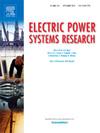Identification of RoCoF sensitive areas of power system based on its controlling factors
IF 3.3
3区 工程技术
Q2 ENGINEERING, ELECTRICAL & ELECTRONIC
引用次数: 0
Abstract
The Rate of Change of Frequency (RoCoF) represents a pivotal parameter used to evaluate the frequency response of power systems. The article aims to present a novel insight on the correlation between RoCoF and its controlling factors by observing its variations across the spatial distribution of the power system network. The analysis may aid power system operators in both real-time and planning stages by allowing them to make informed decisions for system security. Analytical and statistical techniques are employed to identify the factors impacting the RoCoF and to assess the extent of their influence. A Partial Rank Correlation (PRC)-based algorithm is proposed in this paper to capture the sensitivity of the RoCoF. Furthermore, an index is formulated for the identification of the power system network regions most susceptible to RoCoF changes following an event. This index also aids in determining the most suitable locations for placing Inverter-Based Resources (IBRs) as part of the planning procedure. The proposed methodologies were validated using case studies on the IEEE 68 bus system. The results demonstrate the algorithm’s accuracy in predicting RoCoF variations under various contingency scenarios. In the case of a 500 MW load disturbance, RoCoF at bus 37 increased significantly from 0.16 Hz/s in the base case to 0.23 Hz/s—when inertia was reduced in the most sensitive regions.
求助全文
约1分钟内获得全文
求助全文
来源期刊

Electric Power Systems Research
工程技术-工程:电子与电气
CiteScore
7.50
自引率
17.90%
发文量
963
审稿时长
3.8 months
期刊介绍:
Electric Power Systems Research is an international medium for the publication of original papers concerned with the generation, transmission, distribution and utilization of electrical energy. The journal aims at presenting important results of work in this field, whether in the form of applied research, development of new procedures or components, orginal application of existing knowledge or new designapproaches. The scope of Electric Power Systems Research is broad, encompassing all aspects of electric power systems. The following list of topics is not intended to be exhaustive, but rather to indicate topics that fall within the journal purview.
• Generation techniques ranging from advances in conventional electromechanical methods, through nuclear power generation, to renewable energy generation.
• Transmission, spanning the broad area from UHV (ac and dc) to network operation and protection, line routing and design.
• Substation work: equipment design, protection and control systems.
• Distribution techniques, equipment development, and smart grids.
• The utilization area from energy efficiency to distributed load levelling techniques.
• Systems studies including control techniques, planning, optimization methods, stability, security assessment and insulation coordination.
 求助内容:
求助内容: 应助结果提醒方式:
应助结果提醒方式:


